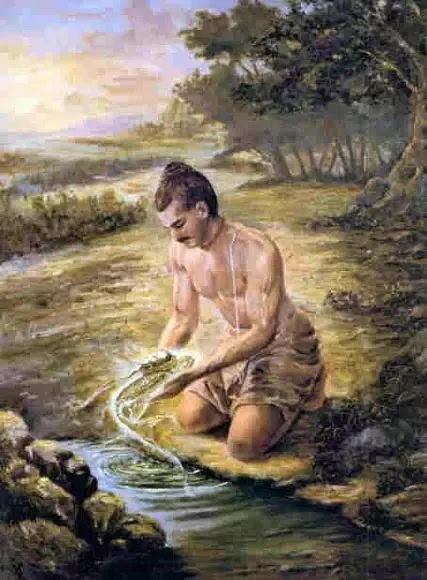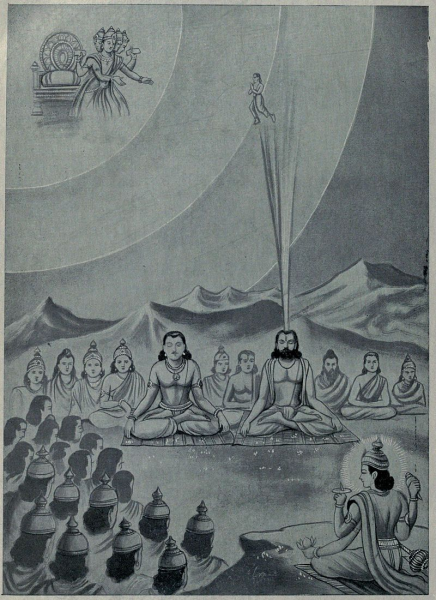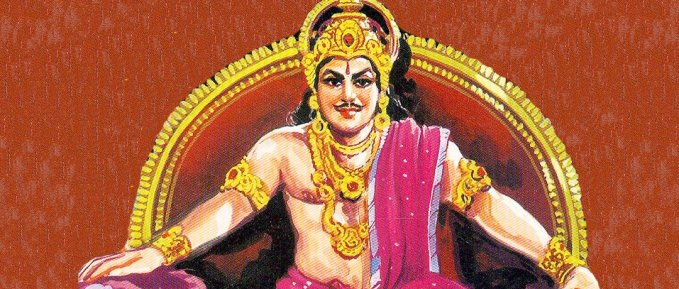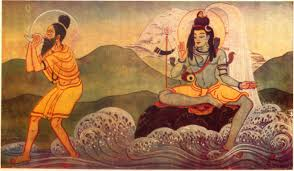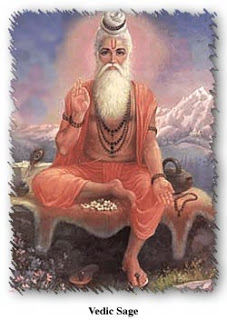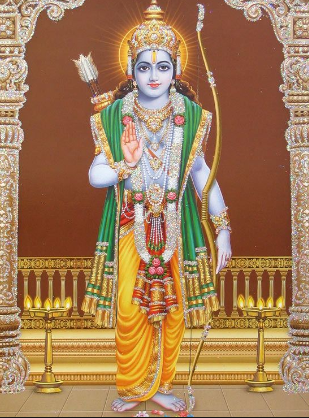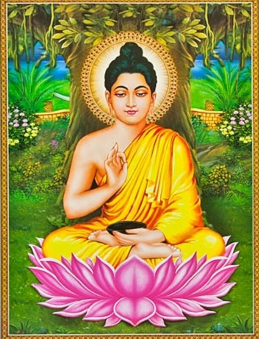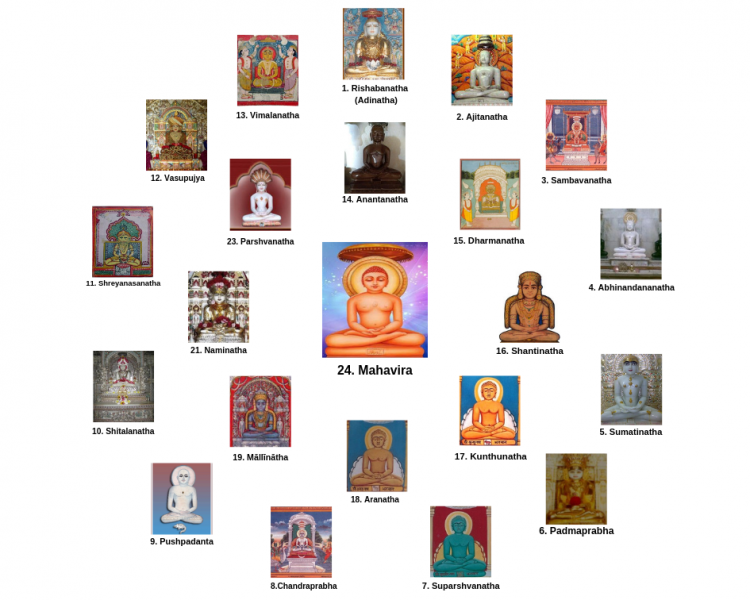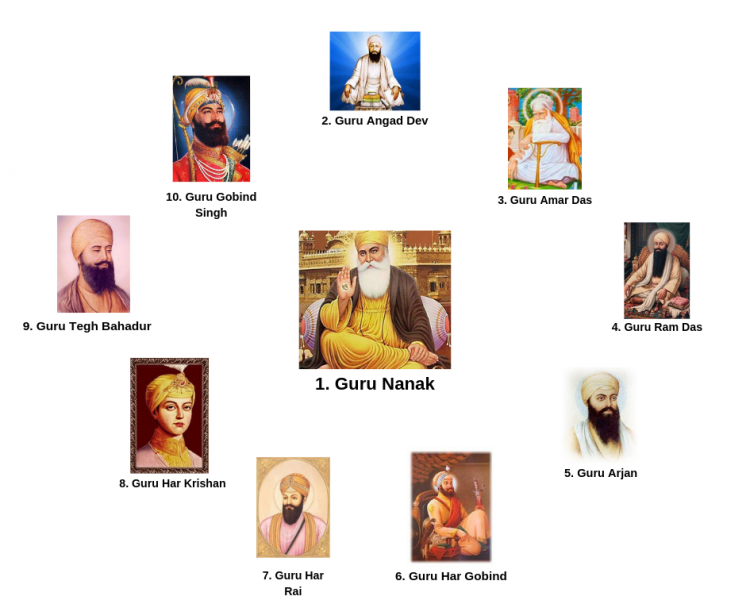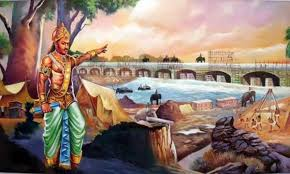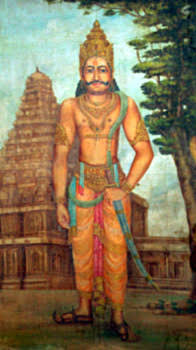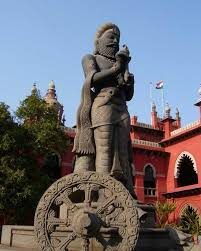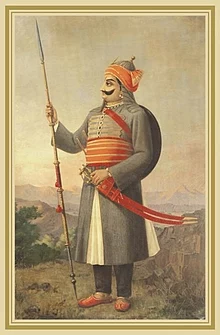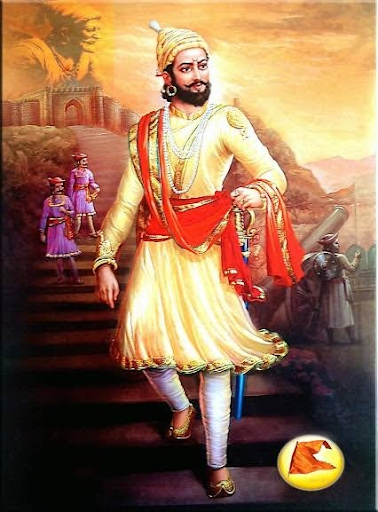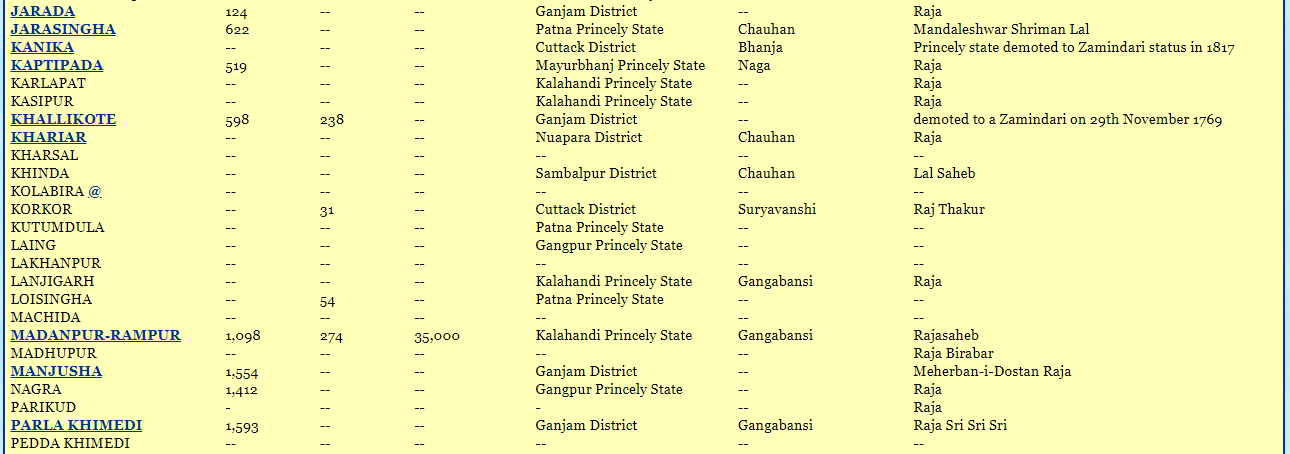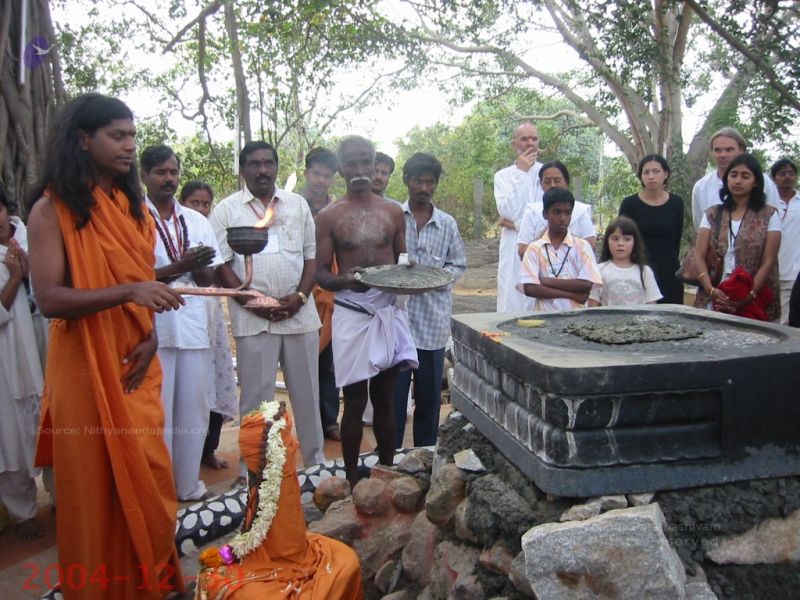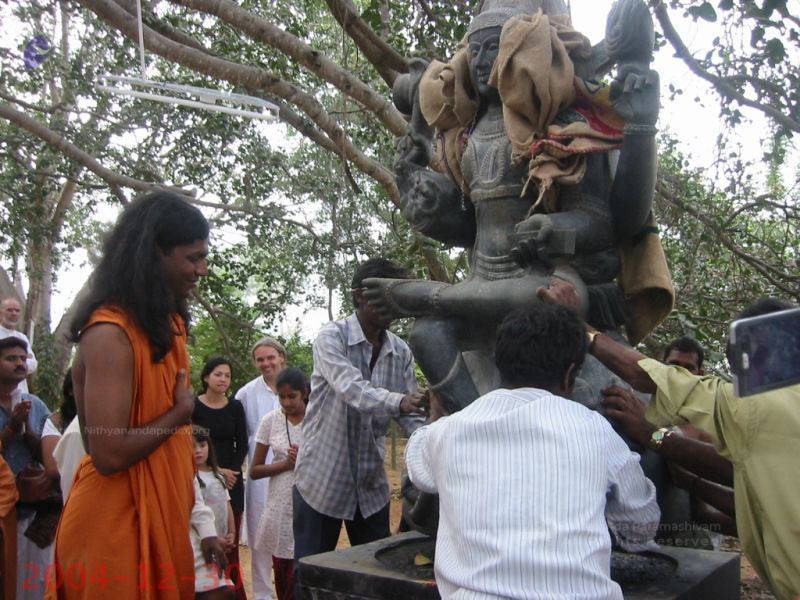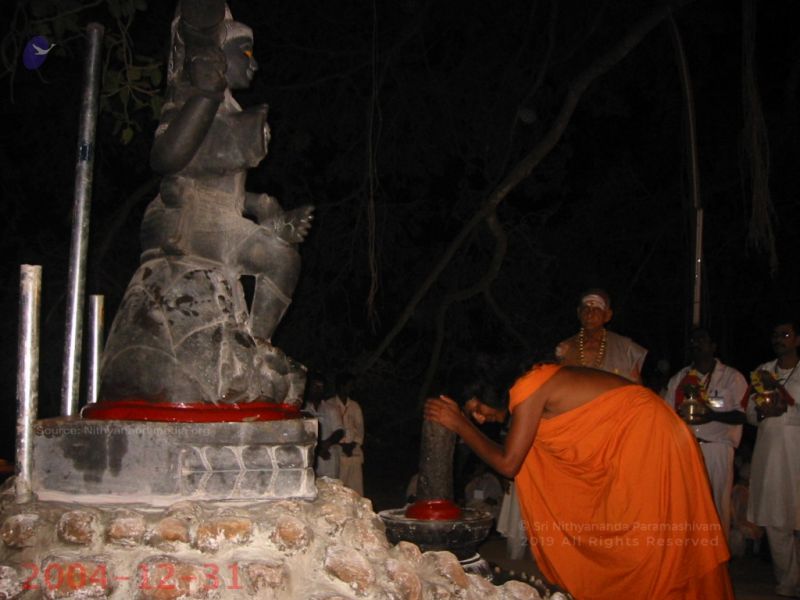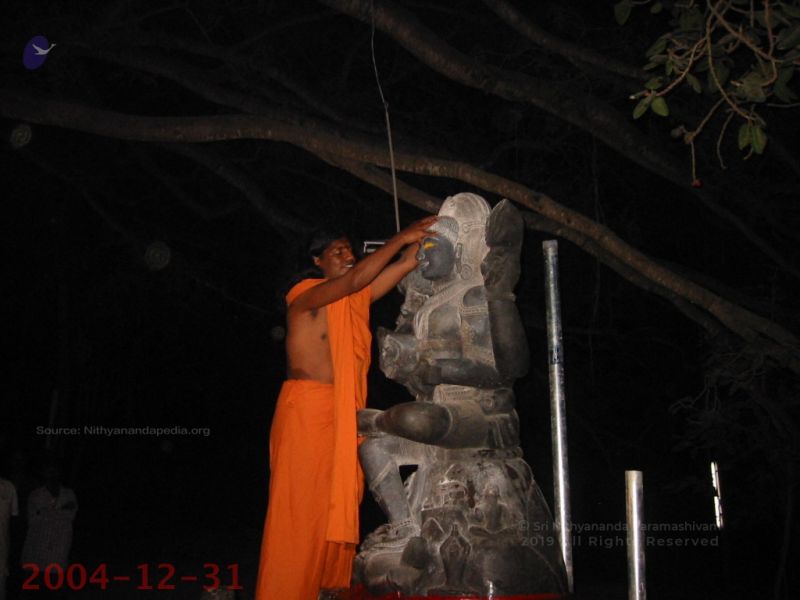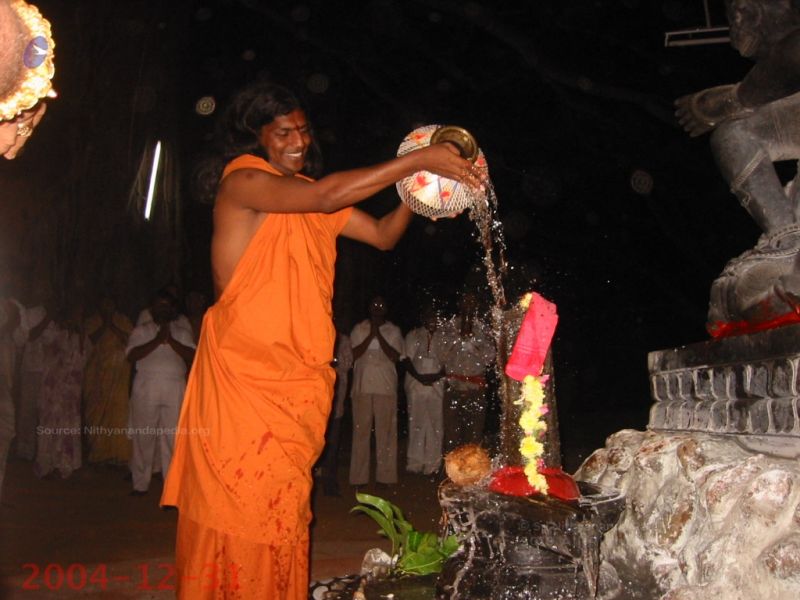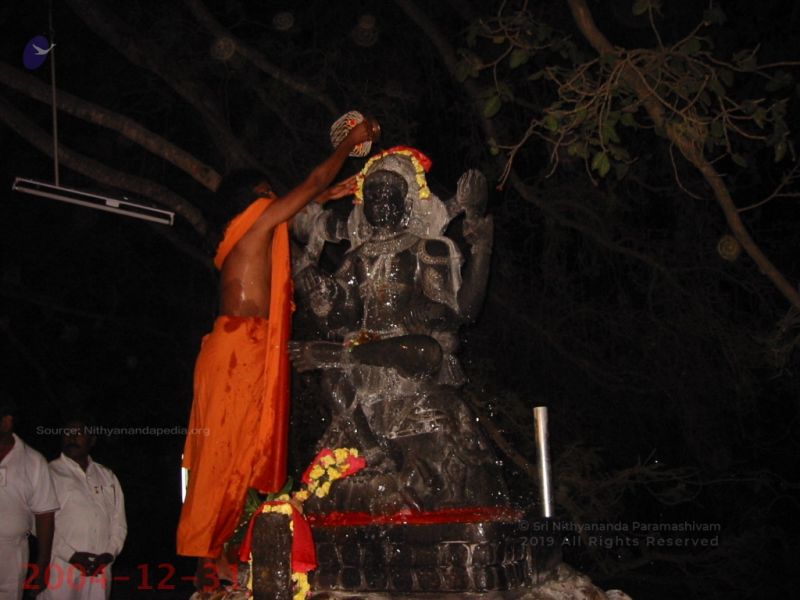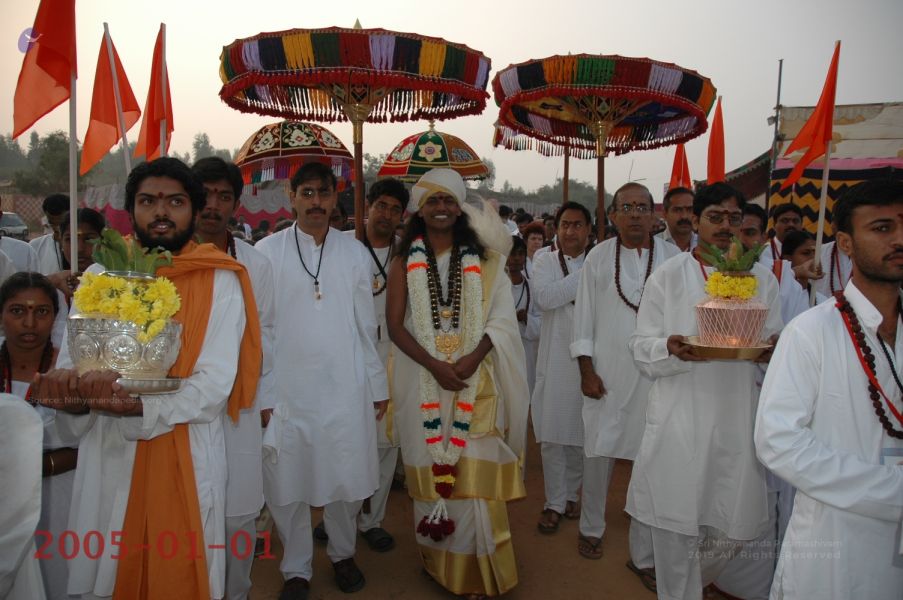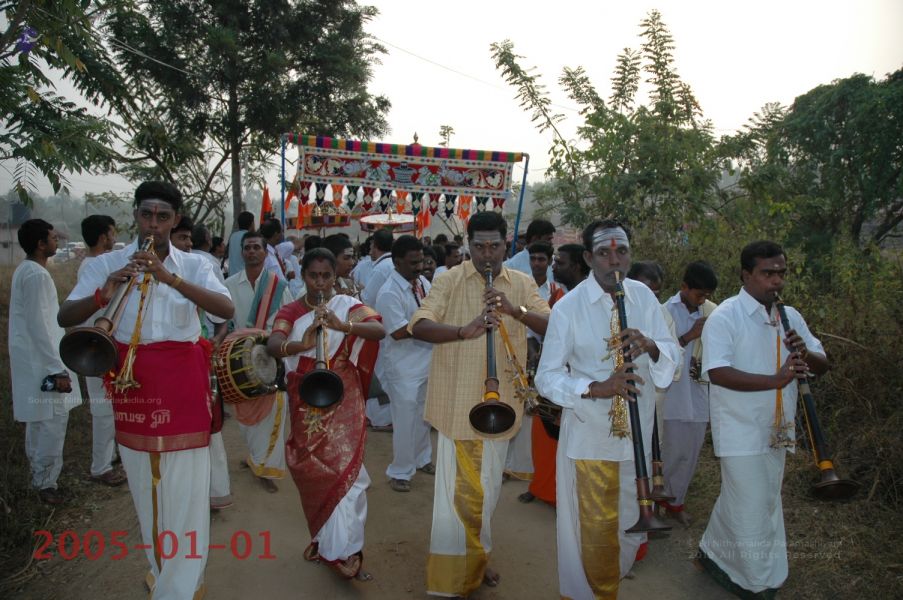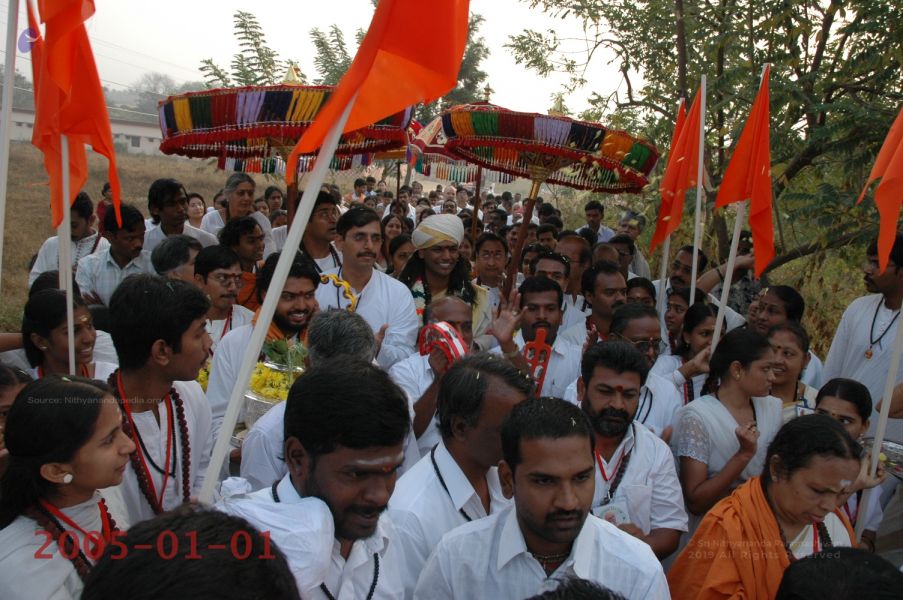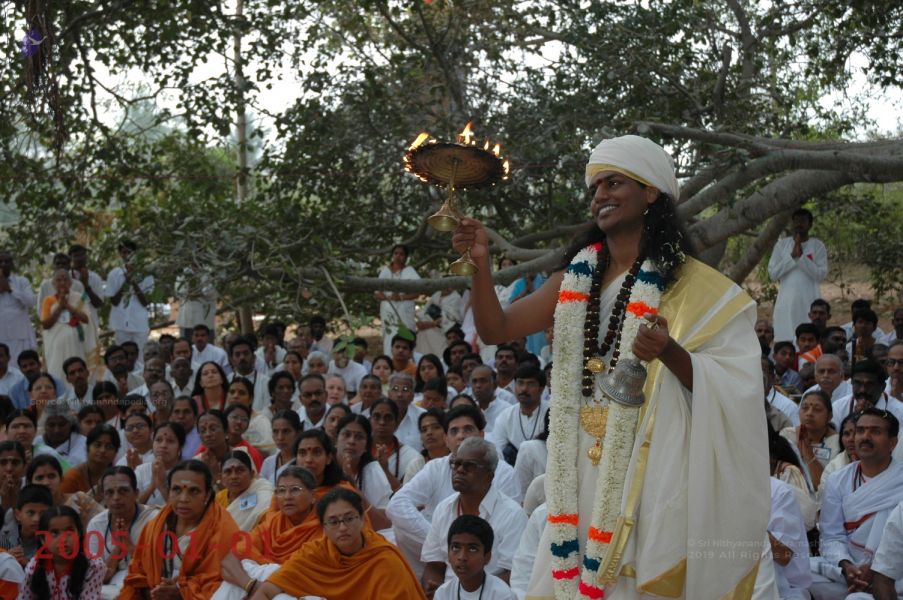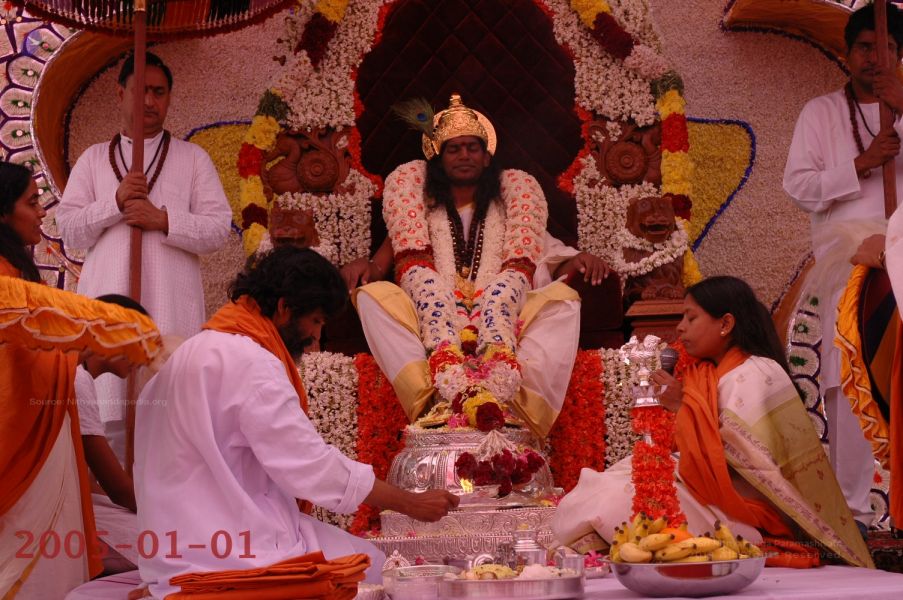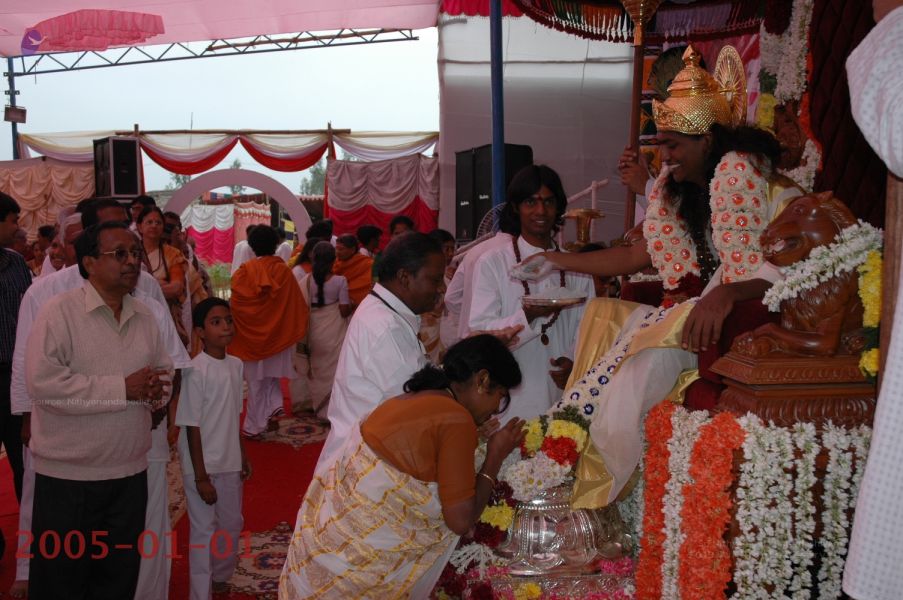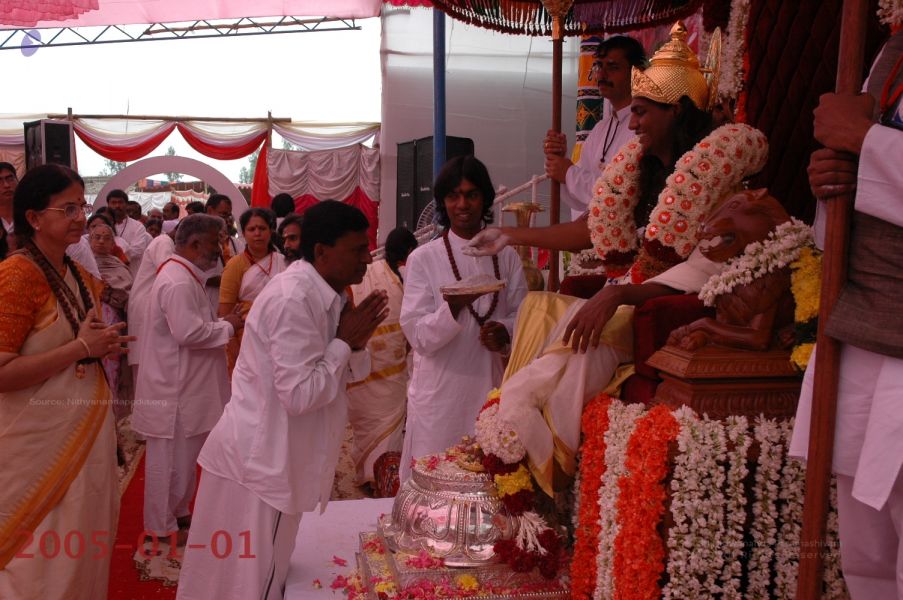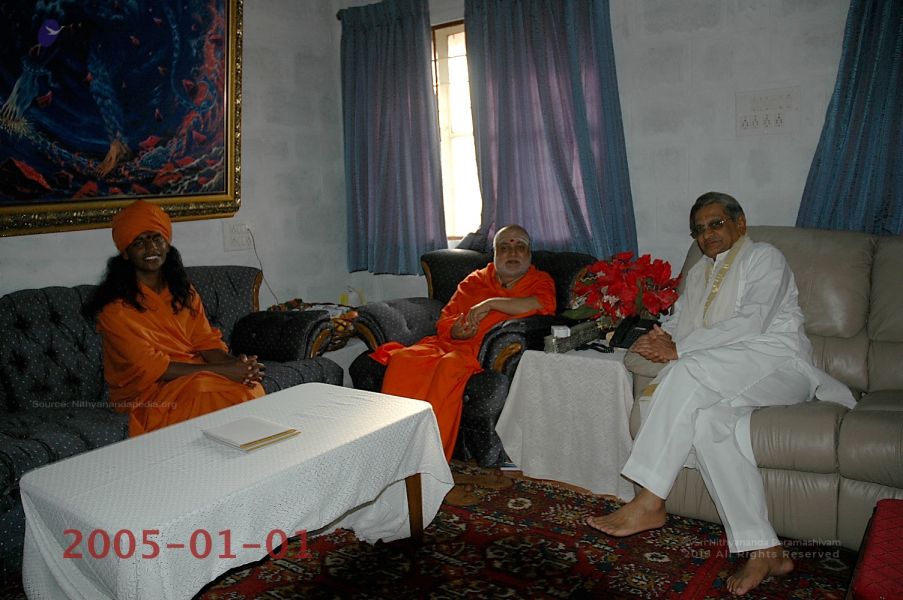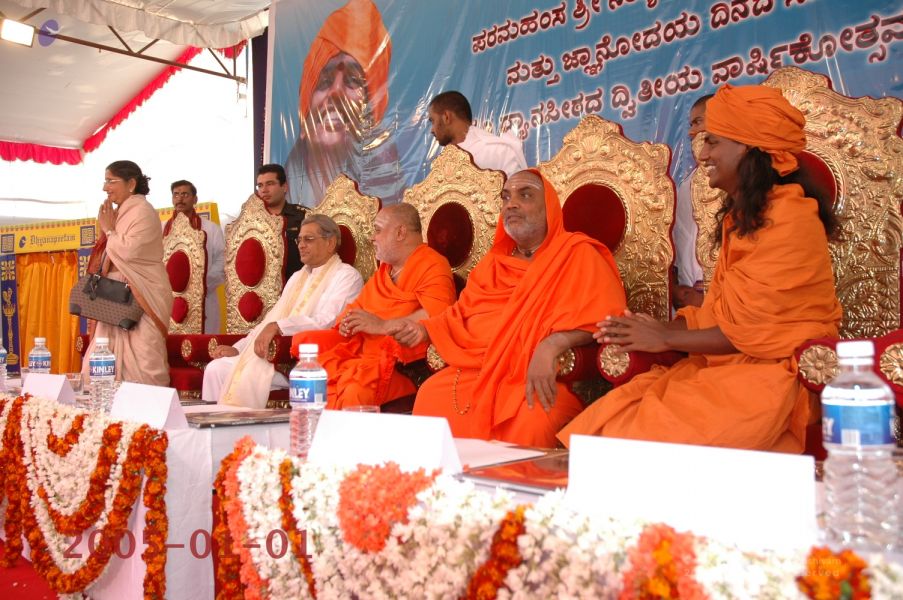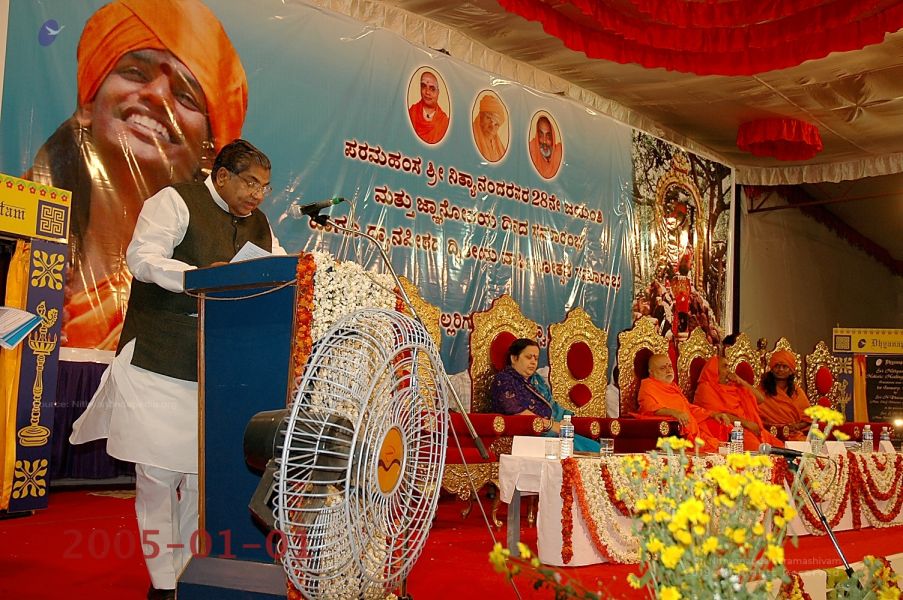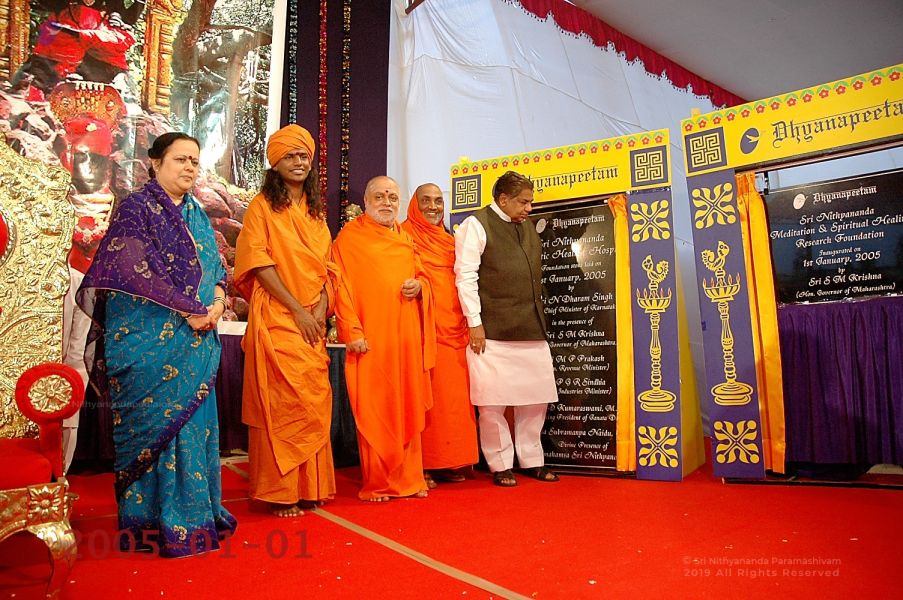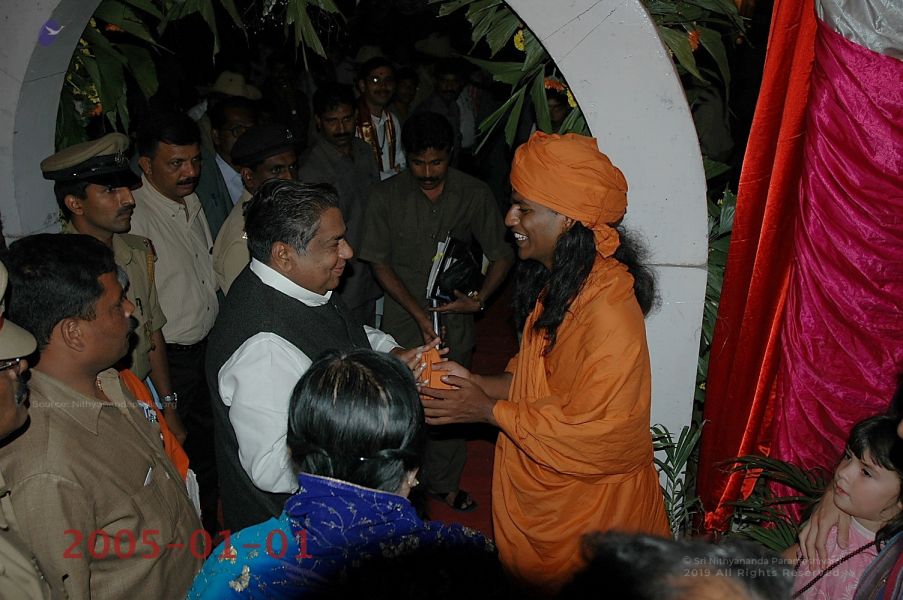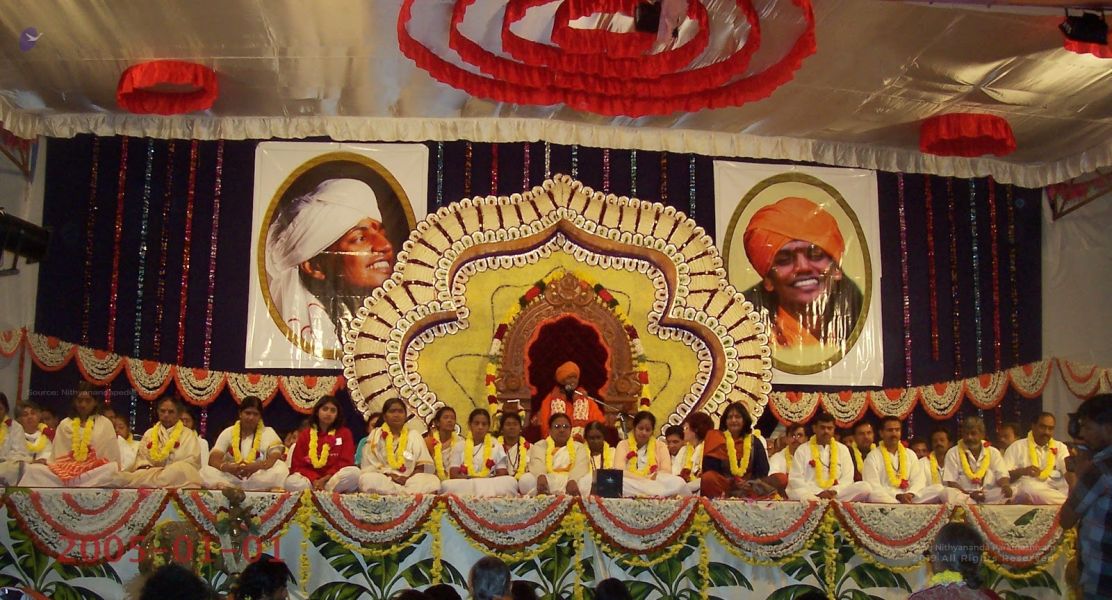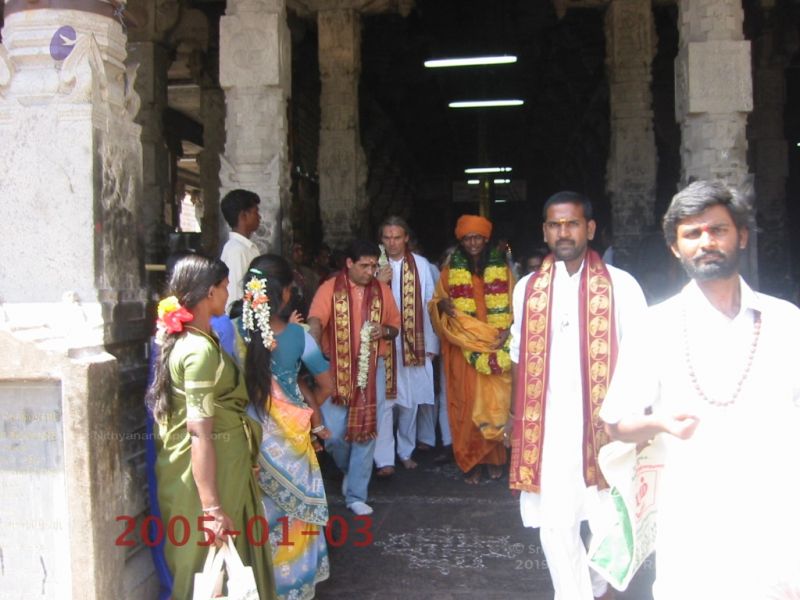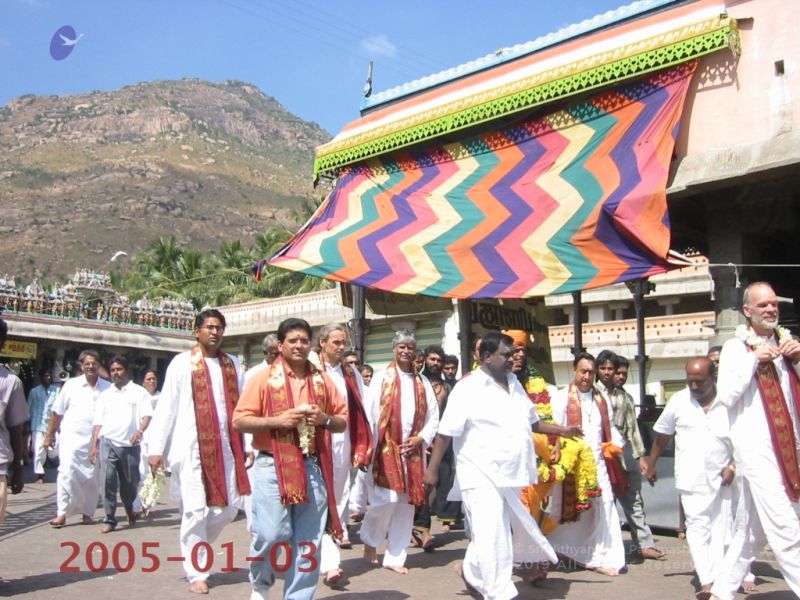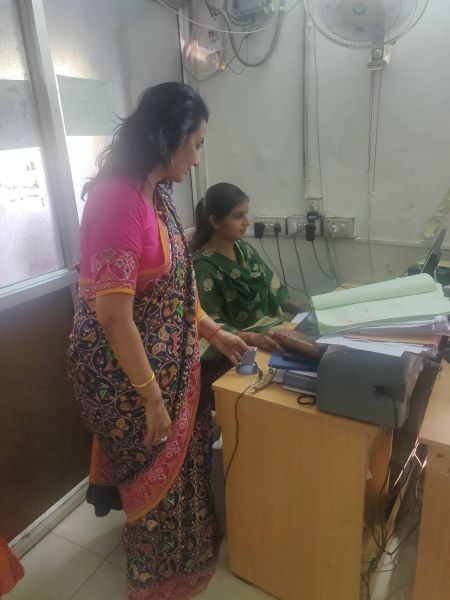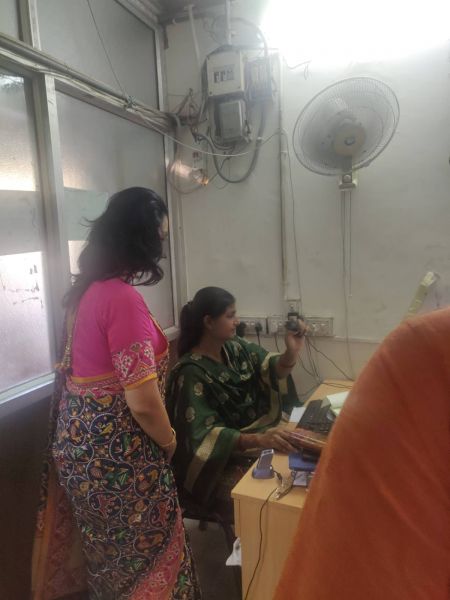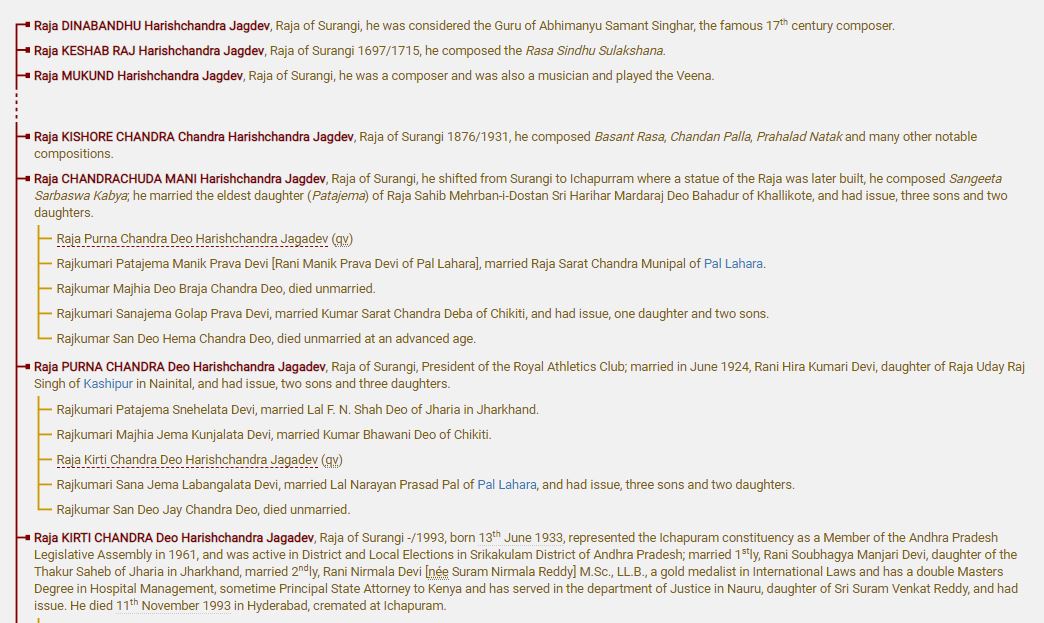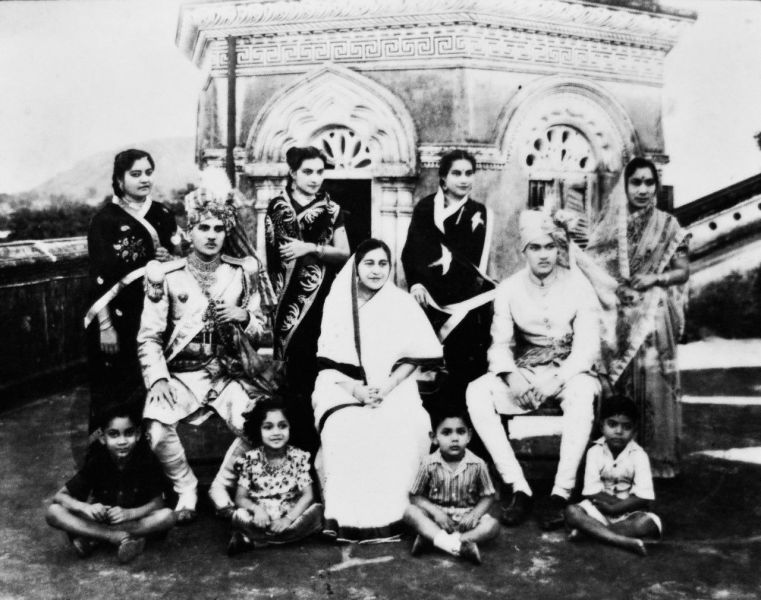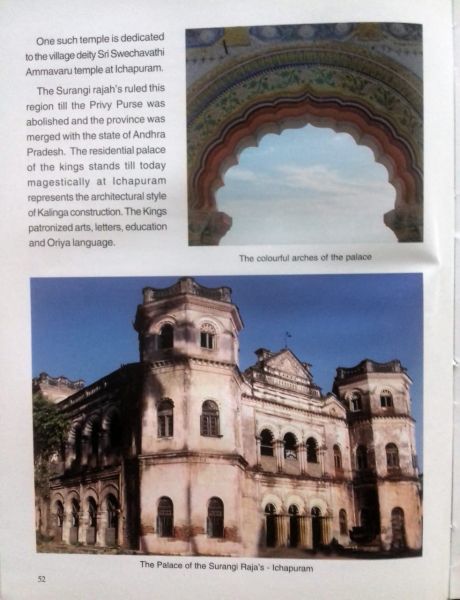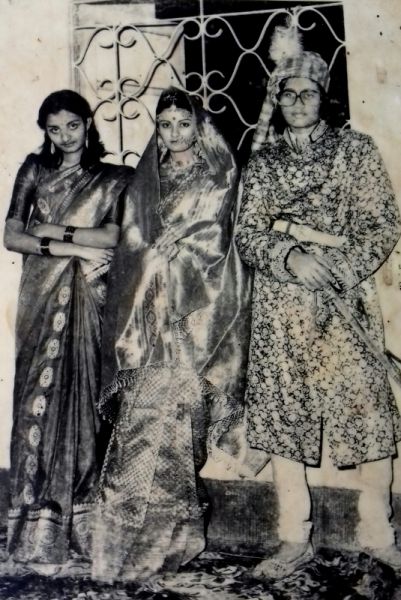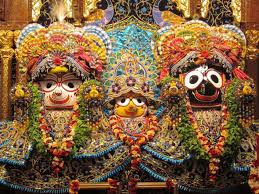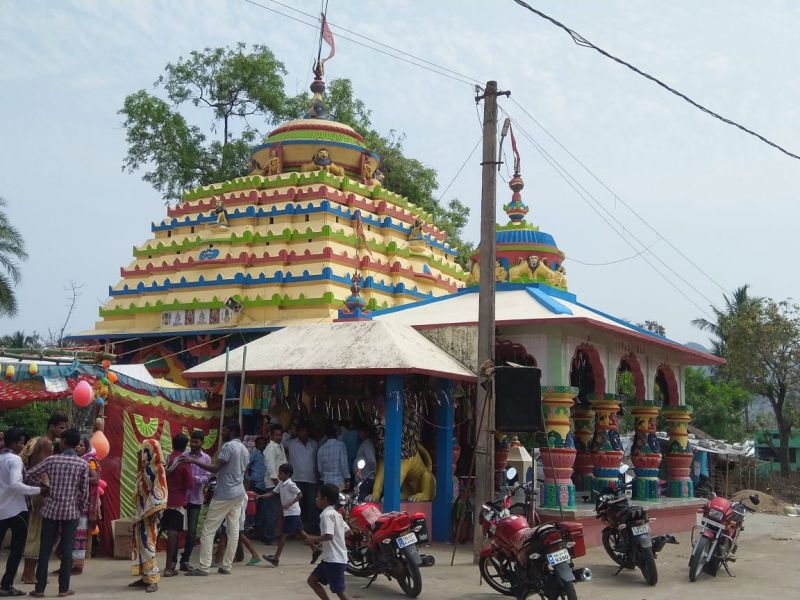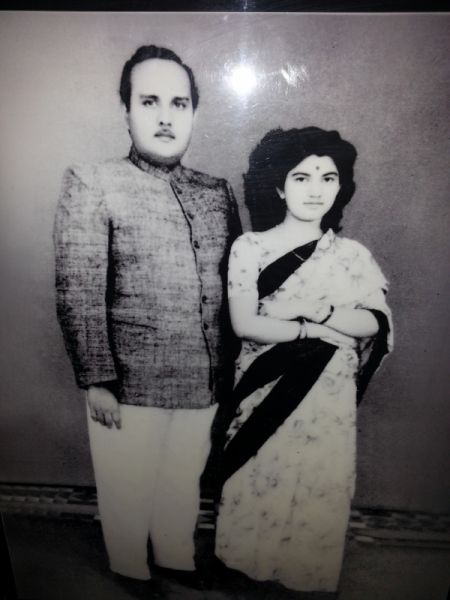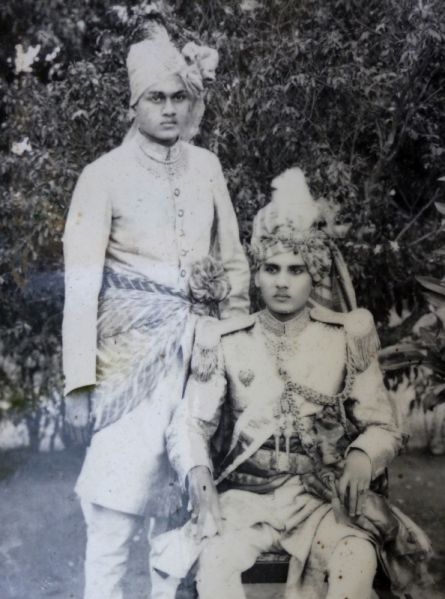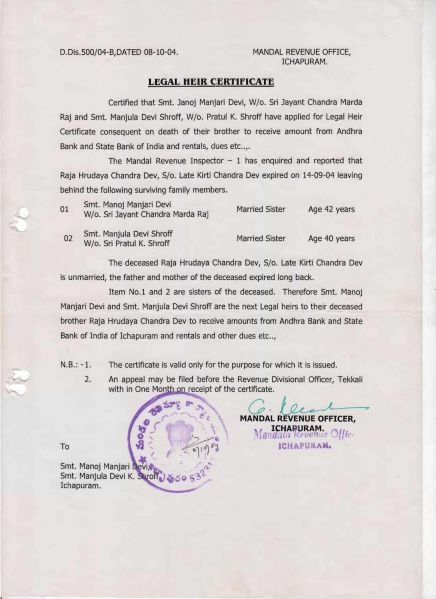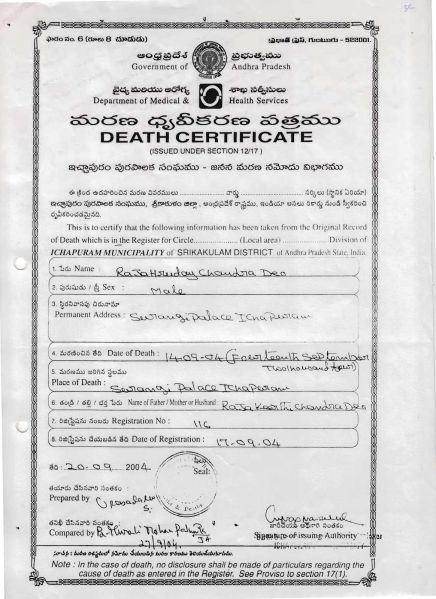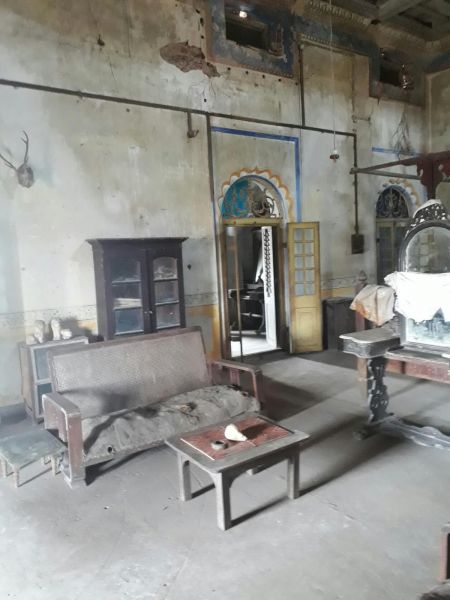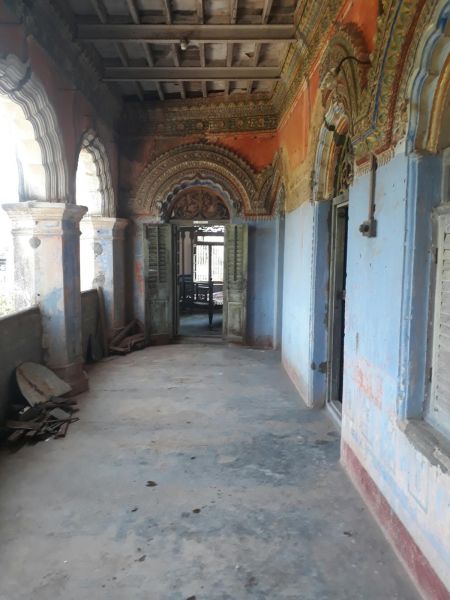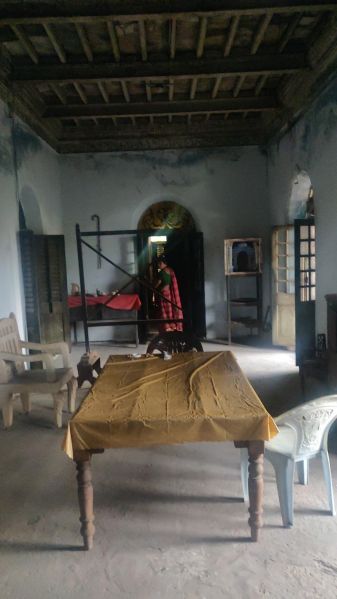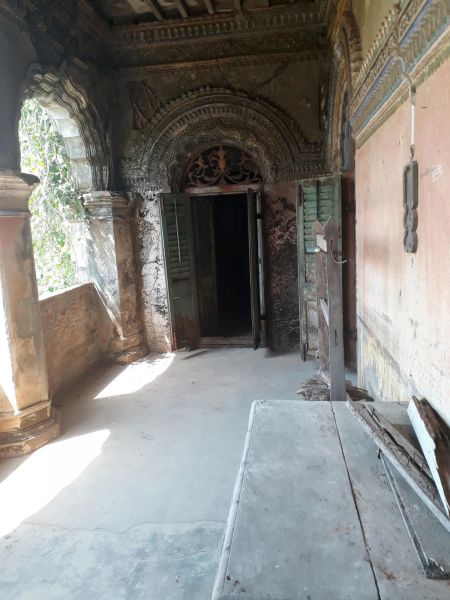Difference between revisions of "Kailaasa Paramparagatha Surya Vamsa Sarvajnapeetha Surangi Samrajyam"
Ma.Bhaktika (talk | contribs) |
|||
| (4 intermediate revisions by 2 users not shown) | |||
| Line 56: | Line 56: | ||
</gallery> | </gallery> | ||
| − | Twenty- | + | Twenty-four Tirthankaras of the Jaina tradition were born into this dynasty as given below: |
1. Rishabhanatha (son of King Nabhi), the founder of Jainism. Bharata Chakravarti (first Chakravartin) and Bahubali (first Kamadeva), sons of Rishabha | 1. Rishabhanatha (son of King Nabhi), the founder of Jainism. Bharata Chakravarti (first Chakravartin) and Bahubali (first Kamadeva), sons of Rishabha | ||
| Line 242: | Line 242: | ||
During this period 212 Sq Km of the Surangi Kingdom comprising 129 Villages were, under threat of invasion, forcibly and illegally dispossessed from the Kingdom and made a part of the secular Indian Union using the Instrument of accession which was introduced by the Government of India Act 1935. (Ref.: http://www.indianrajputs.com/view/surangi). | During this period 212 Sq Km of the Surangi Kingdom comprising 129 Villages were, under threat of invasion, forcibly and illegally dispossessed from the Kingdom and made a part of the secular Indian Union using the Instrument of accession which was introduced by the Government of India Act 1935. (Ref.: http://www.indianrajputs.com/view/surangi). | ||
| − | ==Reviver of Sūrya Vaṃśa | + | ==Reviver of Sūrya Vaṃśa Surangi Samrajya Sarvajnapeetham== |
===Modern Day Lineage=== | ===Modern Day Lineage=== | ||
| Line 344: | Line 344: | ||
</gallery> | </gallery> | ||
| − | With the signing of the Coronation Deed | + | With the signing of the Coronation Deed, The Kailaasa Paramparagatha Surya Vamsa Sarvajnapeetha Surangi Samrajyam (Surangi Kingdom) with its titles, palaces and all related authorities have been transferred in its entirety to the current coronated Emperor of the Surangi Kingdom, His Divine Holiness Bhagavan Sri Nithyananda Paramashivam, as of 2004, and legalized on May 21, 2019 |
==Sūrya Vaṃśa Till Bhagavan Śrī Rāma== | ==Sūrya Vaṃśa Till Bhagavan Śrī Rāma== | ||
| Line 612: | Line 612: | ||
| − | ==Sūrya Vaṃśa Sarvajna | + | ==Sūrya Vaṃśa Surangi Samrajya Sarvajna Peetham Lineage in the 20th Century== |
<gallery mode="packed" heights="400px"> | <gallery mode="packed" heights="400px"> | ||
| Line 647: | Line 647: | ||
File:Surangi4.jpeg|alt=see caption|Photographs of the interior of the Surangi palace, being restored under the guidance of HDH | File:Surangi4.jpeg|alt=see caption|Photographs of the interior of the Surangi palace, being restored under the guidance of HDH | ||
</gallery> | </gallery> | ||
| − | + | ||
| − | |||
[[Category:Kingdoms]] | [[Category:Kingdoms]] | ||
Latest revision as of 15:18, 1 January 2022
The Ancient Kingdom of the Suryavamsa Lineage
Kailaasa in Surangi prevailed as an “enlightenment ecosystem” with tremendously rich and unique history, heritage, festivals, art, architecture and culture, established directly by Paramasiva through Lord Surya, the Sun God. It functioned with such high activism in celebrating the Cosmic Principles. It is also one of the most invaded of Kailaasas in the world by the Mughals. Following is an overview of the glory of Kailaasa in the Surangi region, the persecution of it by the invading rulers, and its revival.
Divine Lineage: The Cosmic Lineage that spread the Cosmic Principles
Kailaasa established by Paramashiva
The Sūrya Vaṃśa, or the lineage of the Sun, has existed from time immemorial having been created from the right eye of Lord Paramaśiva himself and with recorded history starting with the reign of Ikṣvāku, son of Vaivasvata Manu who in turn was the son of Sūrya (the Sun God) Himself and which lineage throughout history has upheld the royal principles of integrity, authenticity, responsibility and enriching and upholding Dharma above all.
Ikṣvāku was the first king who executed the Manusmṛti, the rules of Dharma by Vaivasvata Manu, who was the first person to codify the Cosmic laws of the Universe into the governing laws of a Country. These laws continued to form the basis of all laws and also much later the basis for the administration of the Kingdom of Madurai by the Enlightened Queen Mīnakṣi who ruled over all the 56 nations that constituted the planet at that time.
Bhagavān Śrī Kṛṣna (a divine incarnation of Lord Vishnu) revealed millennia later in the Bhagavad Gitā (the scripture of sacred truths revealed by Bhagavān Śrī Kṛṣna) that he as the Supreme Divinity had taught the imperishable science of Yoga first to Sūrya (the Sun God) who then conveyed it to His son Manu and who in turn to his son Ikśvāku and from then on to the Rājriśis (kings who turn into sages) as Rāja Vidyā Rāja Guhyam (The Royal Knowledge and the Royal Secret).
King Harishchandra – the 31st Ruler in the Lineage
The 18 major Purāṇas are known as the Hindu History. Among these, the Markandeya Purana reveals the exemplary integrity of King Harischandra, the 31st ruler in the lineage. He went to extremes in keeping his integrity to Dharma where he sacrificed all his possessions, his name, fame, power, and kingdom at the feet of his Guru Vishwamitra and attained liberation at the Manikarnika Ghats in Varanasi, North India, which were created by Lord Paramaśiva for liberating those who left their body in that sacred place.
Portrait of King Harishchandra / (Source: https://roar.media/hindi/main/mythology/raja-harishchandra-satyavadi-king-of-ikshvaku-dynasty/)
King Bagiratha – the 43rd Ruler in the Lineage
The 39th Chapter of the Śiva Purāṇa (narration of the divine play of incidents by Lord Paramaśiva) describes the 43rd King in the lineage – King Bhagiratha. He brought the celestial river Ganga to planet earth by the power of his penance and sacrifice to wash the sins of his ancestors, the sons of King Sagara (king of the ocean), who were burnt by Lord Śrī Kapila Muni. Sri Kapila Muni was the founder of the Sānkhya tradition which is the basis of all Vedantic (philosophy based on the sacred source scriptures of Sanatana Hindu Dharma called the Vedas) thought trends and the first head of the Mahanirvani Akhada, the foremost Apex body of Sanātana Hindu Dharma.
Lord Rama – the 62nd Ruler in the Lineage
Lord Śrī Rāma, the Divine Incarnation of Bhagavan Śrī Viṣṇu who was the absolute Puruṣa (a being with Highest Consciousness), blessed Planet Earth by being born as the 62nd King in this great lineage.
Gautama Buddha – the 140th Ruler in the Suryavamsa Lineage
The Buddhist text Mahavamsa (II, 1-24) traces the origin of the Sankyas to King Ikṣvāku known as Okakka in Pali. It further reveals that Gautama Buddha, the royal Prince of the Sānkhyas and Ascetic of the Mahanirvani Peetha of Kapila Mahamuni was the 140th King of this same lineage.
Twenty-four Tirthankaras of the Jaina tradition were born into this dynasty as given below:
1. Rishabhanatha (son of King Nabhi), the founder of Jainism. Bharata Chakravarti (first Chakravartin) and Bahubali (first Kamadeva), sons of Rishabha
2. Arkakirti and Marichi, son of Bharata at the time of Ajitanatha
3. Jitashatru (father of Ajitanatha) and his younger brother Sumitra (father of Sagara)
4. Ajitanatha (the 2nd Tirthankara) and Sagara (2nd Chakravartin)
5. Janhu (eldest son of Sagara), the one who flooded village of Nāgās with waters of Ganga leading to turning of sixty thousand sons of Sagara into ashes by Jawalanprabha (emperor of Nāgās)
6. Bhagiratha (eldest grandson of Sagara) at the time of Sambhavanatha
7. Jitari (father of Sambhavanatha)
8. Sambhavanatha, the 3rd Tirthankara at the time of Abhinandananatha
9. Sanvara (father of Abhinandananatha)
10. Abhinandananatha, the 4th Tirthankara at the time of Sumatinatha
11. Megha (father of Sumatinatha)
12. Sumatinatha, the 5th Tirthankara at the time of Padmaprabha
13. Sidhara (father of Padmaprabha)
14. Padmaprabha, the 6th Tirthankara at the time of Suparshvanatha
15. Pratishtha (father of Suparshvanatha)
16. Suparshvanatha, the 7th Tirthankara at the time of Chandraprabha
17. Mahasena (father of Chandraprabha)
18. Chandraprabha, the 8th Tirthankara at the time of Pushpadanta
19. Sugriva (father of Pushpadanta)
20. Pushpadanta, the 9th Tirthankara at the time of Shitalanatha
21. Dridharatha (father of Shitalnatha)
22. Shitalanatha, the 10th Tirthankara at the time of Shreyanasanatha
23. Viṣṇu (father of Shreyanasanatha)
24. Shreyanasanatha, the 11th Tirthankara at the time of Vasupujya
25. Vasupujya (father of Tirthankara Vasupujya)
26. Vasupujya, the 12th Tirthankara at the time of Vimalanatha
27. Kritavarma (father of Vimalanatha)
28. Vimalanatha, the 13th Tirthankara at the time of Anantanatha
29. Simhasena (father of Anantanatha)
30. Anantanatha, the 14th Tirthankara at the time of Dharmanatha
31. Bhanu (father of Dharmanatha)
32. Dharmanatha, the 15th Tirthankara at the time of Shantinatha
33. Visvasena (father of Shantinatha)
34. Shantinatha, the 16th Tirthankara and 5th Chakravarti
35. Chakrayudha, son of Shantinatha
36. Kuruchandra, son of Chakrayudha at the time of Kunthunatha
37. Sura (father of Kunthunatha)
38. Kunthunatha, the 17th Tirthankara and 6th Chakravarti at the time of Aranatha
39. Sudarsana (father of Aranatha)
40. Arahnatha, the 18th Tirthankara and 7th Chakravarti at the time of Mallinatha
41. Kumbha (father of Mallinatha)
42. Māllīnātha, the 19th Tirthankara at the time of Munisuvrata (Munisuvrata himself was not from Ikṣvāku, but Harivamsa)
43. Dasharatha (father of Rāma)
44. Rāma, Lakshmana, Bharata, Shatrughna
45. Luv and Kusha (twin sons of Rāma) at the time of Naminatha
46. Vijaya (father of Naminatha)
47. Naminatha, the 21st Tirthankara at the time of Parshvanatha
48. Asvasena (father of Parshvanatha)
49. Parshvanatha, the 23rd Tirthankara at the time of Mahavira
50. Siddhartha (father of Mahavira)
51. Mahavira, the 24th Tirthankara
Sodhi Rai and the Gurus of the Sikh Tradition
Sodhi Rai, the son of Kusha, who was the son of Lord Shri Ram moved to Sanadh region in Gujarat where he married the king’s daughter and moved to Madra Desh (now called Punjab) and came to form the lineage called Sodhis in to which lineage was born Śrī Guru Gobind Singh (a prominent Guru of the Sikh religion who founded the warrior sect of Sikhism called Khalsa) in the 17th Century and many other Gurus of the Sikh Tradition of Punjab.
Kings of the Great Chola Kingdom
The Kings of the Great Chola Kingdom such as Karikala Cholan and Raja Raja Cholan who built the towering Śiva temple at Tanjore belonged to the Sūrya Vaṃśa and the Cholas worshipped Sūrya and built several Sun Temples including the Konark Sun Temple in present day Orissa which was built by the Chola princess Kundavai Naachiyar who was the daughter of Raja Raja Chola and the wife of Vimaladitya.
The King Ellalan of the Sūrya Vaṃśa Chola Dynasty earned the title Manu Needhi Chozhan (upholder of the Law of Manu) for his adherence to righteousness and justice and to laws codified by the originator of the Sūrya Vaṃśa Dynasty, Manu, by giving justice to a cow whose calf was killed by his own son when driving a chariot carelessly.
The Rajputs
From the 6th Century AD the Sūrya Vaṃśa lineage of Ikṣvāku has been called by modern nomenclatures as the Rajputs and who were warriors of the ultimate courage and skill who defended Bharath from the invading barbarian tribes from the west and who were rulers who upheld the eternal principles of Sanātana Hindu Dharma.
The famous Rajput King Maharana Pratap was born 247 generations after King Ikṣvāku in the same lineage of the Sūrya Vaṃśa
Chatrapati Shivaji (1630–1680) the great King of the Maratha Empire who fought hard to protect a large part of Southern India and its heritage from the destruction by the Mughals traced his lineage to the Sūryavaṃśi Sisodia Rājput line.
The Rajput Kingdom of Surangi
The Rajput Kingdom of Surangi, The Sūrya Vaṃśa Sarvajna Peetha Surangi Samrajyam, was ruled by great Kings who were descendants of King Harischandra, occupying the region in the north of present day Andhra Pradesh and near the border of present day Orissa and is today the only surviving living tradition of this great lineage.
In the 17th Century the Kingdom of Surangi was ruled by Raja DINABANDHU Harishchandra Jagdev who was the Guru of Abhimanyu Samant Singhar, the famous 17th century composer.
His son Raja KESHAB RAJ Harishchandra Jagdev, Raja of Surangi (1697 to 1715), composed the Rasa Sindhu Sulakshana and his son Raja MUKUND Harishchandra Jagdev, Raja of Surangi was also a composer and a musician who played the Veena.
Relocation to Ichapuram
Raja CHANDRACHUDA MANI Harishchandra Jagdev of Surangi shifted his palace from Surangi to its current location in the city of Ichapuram and was succeeded to the throne by Raja PURNA CHANDRA Deo Harishchandra Jagade.
This kingdom was fully recognized by the British as an independent nation, with its own sovereignty and ability to levy taxes, the extent of the territory being 212 Sq. Km comprising 129 villages
(Ref: Australian Research by Dr. Henry Soszynski - showing that Surangi was recognised as an independent princely state by the British Government ruled by the “Raja” (KING) - Study of Orissa estates during the 19th century). http://members.iinet.net.au/~royalty/ips/misc/orissa_estates.html
Illegal Dispossession
The title as the ruler of this Kingdom and the palace that exists on the land that still belongs to the Kingdom was handed over to HDH Sri Nithyananda Paramashivam as part of the legal succession in a grand ceremony from December 31, 2004 to January 4th, 2005 and he is hence the rightful inheritor and ruler of this occupied territory.
But it was annexed post-independence by the Indian Union in 1953 along with other Rajput states, in violation of international laws including the Covenant of the League of Nations and subsequently Article 2(4) of Chapter I of the UN Charter, only allowing them to retain their lineage and titles and certain properties specifically owned by them.
During this period 212 Sq Km of the Surangi Kingdom comprising 129 Villages were, under threat of invasion, forcibly and illegally dispossessed from the Kingdom and made a part of the secular Indian Union using the Instrument of accession which was introduced by the Government of India Act 1935. (Ref.: http://www.indianrajputs.com/view/surangi).
Reviver of Sūrya Vaṃśa Surangi Samrajya Sarvajnapeetham
Modern Day Lineage
Raja KIRTI CHANDRA Deo Harishchandra Jagadev, Raja of Surangi, 13th June 1933 - Nov 1993, ruled the Kingdom of Surangi during his lifetime and also represented the Ichapuram constituency as a Member of the Andhra Pradesh Legislative Assembly in 1961.
His eldest daughter Rani Manoja Manjari Devī was adopted into another family early in her life
His son Raja HRUDAYA CHANDRA Deo Harishchandra Jagadev, Raja of Surangi, born 9th March 1966, died unmarried and childless on 13th September 2004.
The younger daughter of KIRTI CHANDRA, Rani Sana Jema Manjula Manjari Devi (Mrs. Manjula Pooja Shroff), then assumed the position of the Queen of the Surangi Kingdom
Coronation of His Divine Holiness Bhagavan Sri Nithyananda Paramashivam as King of Surangi
San Rani Jema Manjula Manjari Devi, the queen of Surangi, being worried about the question of how she would administer and manage this large Kingdom and make it glorious, prayed to Paramaśiva asking for the right successor who will take this Kingdom to its original glory.
At that time, His Divine Holiness Bhagavan Sri Nithyananda Paramashivam, then known as Sri Nithyananda Swami, gave Darshan and experiencing Swamiji as Paramaśiva, she decided to surrender the Kingdom at his feet and he blessed her by assuming the responsibility as the King and now he is taking the Kingdom to it glorious future.
His Divine Holiness Bhagavan Sri Nithyananda Paramashivam, then known as A. Rajashekar born in Thiruvannamalai, hails from the Thondai mandala Ādi Saiva Vellalar community also known as the Thondamanadal Saiva Vellalar community.
His Divine Holiness Bhagavan Sri Nithyananda Paramashivam is one who belongs to the Royal Ādi Saiva lineage descended from the Great Chola Kings of the Sūrya Vaṃśa, is the direct Incarnation of Paramaśiva the ultimate Divinity and originator of the lineage of the Sūrya Vaṃśam, who now again has revived the true science of yoga that was first given to Sūrya by him and from there on to Manu, Ikṣvāku and the various Rishis and is the Raja Guru of the Sūrya Vaṃśa Sarvajñapiṭham Surangi Samrajyam
It is the time honored and age old tradition of the Sūrya Vaṃśa that Kingdoms are ruled by enlightened masters or Raja Gurus whenever they so choose to honor the Kingdom by taking on the responsibility of administration as happened historically when Harischandra gave his kingdom to his Guru Viswamitra, Chatrapati Shivaji offered his entire Kingdom to his Guru, Samarth Ramdas Swami and Mīnākṣi, Goddess Parāśakti herself, offered the entire 56 Nations which constituted all of planet earth during her reign to Paramaśiva, Sundareśvara, when he showed her the ultimate cosmic reality of his nature and enlightened her.
And in September 2004, the then Raja Matha (Queen) of Surangi, Rani Sana Jema Manjula Manjari Devi (Mrs. Manjula Pooja Shroff), declared, “It is now my privilege and honor through this document by the power vested in me as per the ancient customs and traditions of the Kingdom of Surangi, to formally declare the nomination of HDH Bhagavan Sri Nithyananda Paramashivam @ Sri Nithyananda Swami as the Supreme Ruler and inheritor of this ancient throne and with it the Sūrya Vaṃśa Sarvajna Peetha Surangi Samrajyam and all rights vested with it. All decisions regarding the Kingdom of Surangi will henceforth happen as per his will and command.”
Through a traditional ritualistic grand coronation ceremony that lasted five days from 31st Dec 2004 to 4th January 2005, His Divine Holiness Bhagavan Sri Nithyananda Paramashivam was coronated as King of Kailaasa Paramparagatha Sūrya Vaṃśa Sarvajnapeetham Surangi Samrajyam (spiritual, religious and political kingdom). Following are pictures from the coronation ceremony.
31 Dec 2004 – On the eve of the coronation, His Divine Holiness performs the unique process of prana pratishta (consecration of deity through infusing life energy directly into it) of the Shiva Linga and Dakshinamurthi deities. This is a deeply powerful and mystical process which only an incarnation can perform as He is the embodiment of the Cosmic Energy Himself.
With the signing of the Coronation Deed, The Kailaasa Paramparagatha Surya Vamsa Sarvajnapeetha Surangi Samrajyam (Surangi Kingdom) with its titles, palaces and all related authorities have been transferred in its entirety to the current coronated Emperor of the Surangi Kingdom, His Divine Holiness Bhagavan Sri Nithyananda Paramashivam, as of 2004, and legalized on May 21, 2019
Sūrya Vaṃśa Till Bhagavan Śrī Rāma
1. Ikṣvāku
2. Kukshi/Vikukshi
3. Kakutstha/ Puranjaya
4. Anena or Anaranya
5. Prithu
6. Vishvagashva
7. Ardra or Chandra
8. Yuvanashva I
9. Shravast
10. Vrihadashva
11. Kuvalashva
12. Dridhashva
13. Pramod
14. Haryashva I
15. Nikumbh
16. Santashva
17. Krishasva
18. Prasenjit I
19. Yuvanashva II
20. Mandhatri
21. Purukutsa
22. Trasadasyu
23. Sambhoot
24. Anaranya II
25. Trashdashva
26. Haryashva II
27. Vasuman
28. Tridhanva
29. Tryyaruna
30. Satyavrata/Trishanku
31. Harishchandra
32. Rishi Viswamitra and then Rohitashva
33. Harita
34. Chenchu
35. Vijay
36. Rusak
37. Vrika
38. Bahu or Asit
39. Sagara
40. Asmanjasa
41. Anshuman
42. Dileepa I
43. Bhagiratha
44. Shrut
45. Nabhag
46. Ambarish
47. Sindhu Dweep
48. Pratayu
49. Shrutuparna
50. Sarvakama
51. Sudaas
52. Mitrasah
53. Sarvakama II
54. Ananaranya III
55. Nighna
56. Animitra
57. Duliduh
58. Dileepa II
59. Raghu II
60. Aja
61. Dasaratha
62. Rāma
Kings after Rāma and Mahābhārat
Kings After Rāma
63. Lava and Kusha
64. Atithi
65. Nishadha
66 Nala
67. Nabhas
68. Pundarika
69. Kshemadhanvan
70. Devanika
71. Ahinagu
72. Roop
73. Rudra
74. Paripatra
75. Dala/ Balasthala
76. Chhal (or Anal)
77. Ukya
78. Vajranabha
79. Avalash
80. Vyushitashva
81. Vishvasaha-2
82. Hiranyanabha
83. Pushya
84. Dhruvasandhi
85. Sudarshana-2
86. Agnivatna two
87. Shighra
88. Maru-2
89. Prasushruta
90. Susandhi
91. Amarshana
92. Mahasvan
93. Vishwasahav
94. Prasenjit-1
95. Takshaka
96. Brihadbala
Kings After Mahābhārat
97. Brihatkshaya
98. Urukriya
99. Vatsavyuha
100. Prativyoma
101. Bhaanu
102. Divakara
103. Veer Sahadeva
104. Brihadashva-2
105. Bhanuratha
106. Pratitashva
107. Supratika
108. Marudeva
109. Sunakshatra
110. Pushkara
111. Antariksha
112. Suvarna
113. Sumitra
114. Bruhadaraaj
115. Barhi
116. Kritanjaya
117. Ranajjaya
118. Sanjaya
119. Shakya
120. Śuddhodana
121. Siddhartha
122. Rāhula
123. Prasenajit
124. Kshudraka
125. Ranaka
126. Suratha
127. Sumitra
Sūrya Vaṃśa Surangi Samrajya Sarvajna Peetham Lineage in the 20th Century
Historical Documents and Photographs
EXTENT OF SURANGI SAMRAJYA
The number of villages of the Surangi kingdom was 129 consisting of 117 raiyati villages (villages with cultivable lands) and 12 inam (gifted lands) (7 pre-settlement and 5 post-settlement). The name of the last Zamindar (owner) was Shri Puma Chandra Harichandra Jagat Deo. (Ref: http://www.gopabandhuacademy.gov.in/sites/default/files/gazetter/Angul_Gazetteer.pdf)

